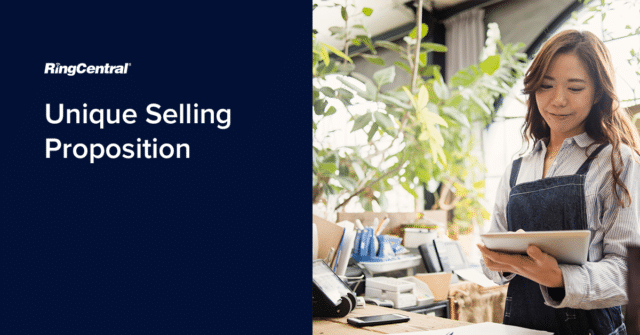Competition, especially amongst eCommerce brands, has never been fiercer. Customers have an endless variety of options to choose from when they’re shopping, and they’re looking for products and services that meet their specific needs and values.
Defining a Unique Selling Proposition
The ‘special something’ that sets one company’s offerings apart from its competitors is termed a unique selling proposition (USP).
A USP should play to the strengths of a business, rather than simply being ‘unique’ for the sake of being unique. A unique selling proposition should differentiate around an aspect your core audience cares about if it is effective. The message you choose to focus on should be something that your competitors don’t do well but that you do.
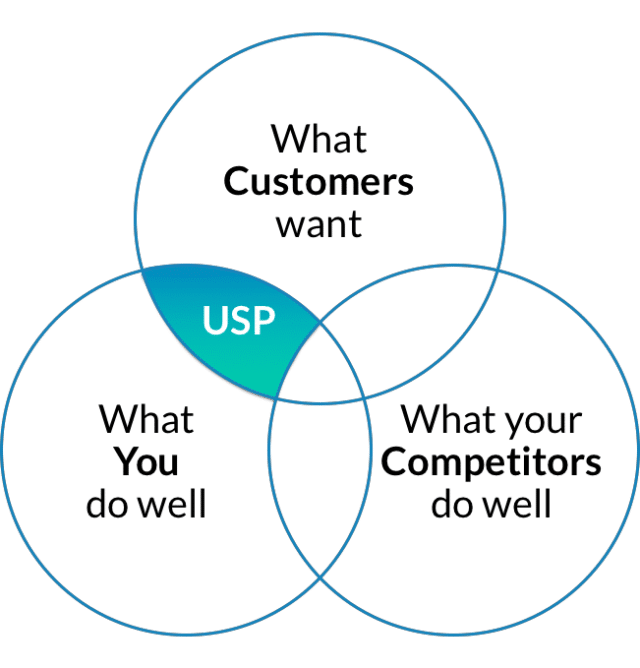
Many marketers struggle to formulate their unique position against the competition and lose market share. Sometimes a business owner can get a little bit too focused on how they themselves perceive their product’s benefits and forget it’s their customers’ needs they need to satisfy – not their own.
In fact, it’s the customer mindset that needs to be at the forefront of developing a USP. So it’s essential to ascertain the customer’s point of view. Simply talking to customers in a targeted way about their buying decisions can be a big help when determining why they buy your or a competitor’s products.
It’s important not to confuse a USP with a specific marketing offer. A USP is not “20% off” or “free shipping”. While helpful in promoting a product or service, these offers are not in themself unique, nor are they positions that are easy to defend – because competitors can copy them.
A unique selling proposition is an overall position a company takes – one that’s incorporated into the products and the experience provided to customers at all touchpoints.
Why is a Unique Selling Point Important?
Your potential customers are struggling to decide on which product or service is right for them. This can be time-consuming and tedious for them – especially when they’re faced with a mountain of opportunities. Your job is to help make their lives easier and give them a good reason why your product or service fits the bill.
It’s crucial to understand how to identify the USP – also sometimes known as the unique value proposition (UVP) – that suits your audience, so you can use it to guide your branding and marketing campaigns.
Uncovering your USP will help focus your digital marketing strategy and messaging – not to mention your brand positioning and other promotional decisions. At base, a USP needs to answer a customer’s immediate questions when they encounter your brand. For example:

Types of Unique Selling Propositions
There are many different types of unique selling propositions that can differentiate a business. What’s important is that they’re focused on a different value based on what your customers think is important. These can range from product functionality to company culture, a company’s charitable and ethical commitments, and much more.
Here are three general aspects around which it’s possible to position a product and create a USP:
1. Products
A unique selling proposition based on a product establishes a company’s claim that its offering is superior to a competitor’s. For example, a company selling rare vinyl records can differentiate itself based on unique, sought after products that can’t be found elsewhere. Product USPs can also be based on functionality, options (e.g. size, colours, etc.), and product quality.
2. Pricing
Buyers are always looking for a good deal, so cost plays a part in most purchasing decisions. Especially when it comes to comparison shoppers, price-based propositions shouldn’t discount a product’s quality but emphasise value, appealing to customers who want a quality product at a better price. USPs can also be based on the type of payment terms a retailer offers, e.g., interest-free credit.
3. Customer support
Some prospective customers are primarily looking for reassurance and reliability when they purchase. Product and price, while important, play a lesser role than reliable customer support. For example, having a clear return policy, well-staffed help centres, comprehensive online resources, including access to social media channels, or a combination of all of these will help make customers feel more comfortable about buying from you.
A support-focused USP is basically selling peace of mind so that customers feel they will be looked after in the event of any problems. USPs can be based around delivery options, customer premium or status options, too.
This type of USP is particularly relevant to merchants who wish to cultivate an ongoing relationship with customers and prevent them from pressing the unsubscribe button.
Unique Selling Proposition Examples
These case studies are examples of retailers at the top of their game regarding defining and messaging their USPs.
1. Discount Direct Furniture & Mattresses
Discount Direct Furniture’s unique selling proposition is based on price: “Affordable furniture that’s great quality, and comes with elite service”. This USP has been clearly defined for new customers and has helped it expand its store since 2010.
Its unique selling proposition is reflected in the brand name and backed up by the website, which asks, “Why to choose Discount Direct?” Because they offer “Factory Direct Low Prices”.
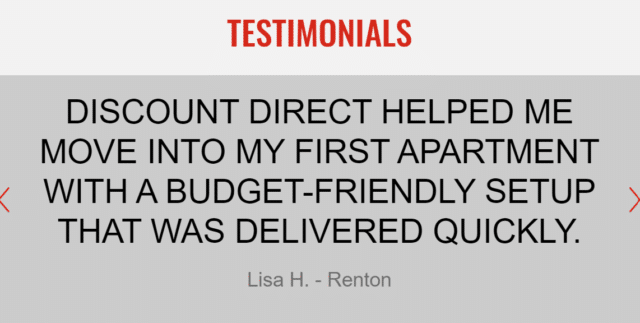
2. Saddleback Leather
Saddleback Leather’s USP is also built on product quality with the tagline “They’ll fight over it when you’re dead”. This sentence powerfully conveys the unique quality of their items, i.e., that it’s so well-made it will outlive its owner. The message is reinforced by the fact they offer a 100-year warranty with the promise your item will last you a lifetime at least.

The idea of longevity makes Saddleback Leather’s products stand out from competitors, many of whom try to differentiate themselves by positioning their products as status symbols or based on the latest styles. Saddleback also includes a “how it’s made” video to illustrate the quality of the craftsmanship of their products.
3. Amazon
While Amazon has several USPs to fit different target markets, one of its main professed missions is to be the “Earth’s most customer-centric company”. Their USP is going the extra mile to understand a customer’s issues and provide exceptional customer service. They’re open 24/7 to answer customer queries via multiple channels, enabling sellers to cut their response times in half, even during peak seasons.
This offers buyers reassurance their problems will be dealt with efficiently – an attractive proposition that makes customers feel they will be looked after.
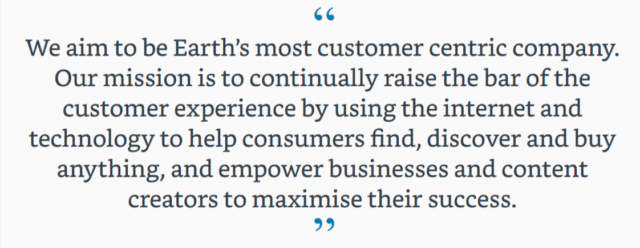
4. Patagonia
A USP doesn’t always have to be based on price, product, or service. It’s become far more common for USPs to address ethical concerns. This is the case with fashion retailer Patagonia. Their proposition caters to the rising demand for handmade, responsibly sourced goods in recent years in a savagely competitive market.
Clothing remains highly mass-produced, so an online store with an ethical stance stands out. Patagonia’s garments are made from recycled materials and organic cotton, while they work with US factories where possible and are committed to offering fair trade wages to workers abroad. Their message: “We care for workers”.
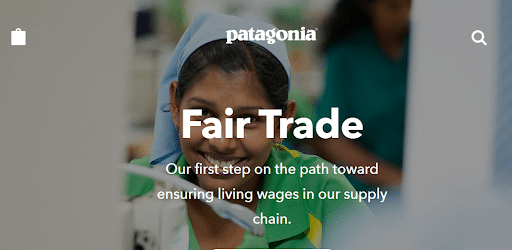
How to Write a Compelling Unique Selling Proposition
Now we’ve looked at some good examples of unique selling points you may be wondering, especially if you’re a startup or small business, how to go about writing your own. While a USP is, by its very nature, unique, that doesn’t mean to say there aren’t some tried and tested processes you can follow to get on the right track.
Here’s how:
1. Make a list of the potential differentiators offered by your brand and your products. Be specific about this uniqueness and write down how you solve exact problems for customers.
2. Research your competitors. You may already be gathering intelligence around their financials and profitability to establish their market share, but it will also pay you to understand what their USPs are.
Then, you can identify gaps in the market where you can introduce your brand differently. Products within a similar category can be positioned in entirely different ways. For instance, sportswear can be emphasised in terms of style, comfort, or durability.
3. Compare your USPs against customer needs. Have you fulfilled all your customer needs, or are there some pain points you haven’t covered?
4. Compile your data and sift through this information to identify your best USP.
5. Consider how you will use your USP across your business. If applied properly, your USP can be incorporated into all aspects, from brand name and content marketing to your returns policy, to help reinforce your message to customers.
Once you’ve identified what your USP could be, write it down. Express it as a positioning statement. For example, as follows:

While this may not be how it eventually appears on your website, it should help you to pinpoint your USP clearly, as well as your audience or any specific differentiators that could be worth highlighting.
If you need help getting started with creating your USP, templates like this might help.
How to Test Your USP With A/B Testing
If you’re unsure what’s driving customers to buy from you, A/B testing your USP on a landing page can help. By testing different USPs against one another, you can find the marketing messages that are resonating the best with customers. To A/B test, you’ll need to measure a specific conversion metric, such as a product purchase.
Say, for example, you sell ethical clothing. You aren’t sure if people buy mainly because you make them locally or because they’re made out of sustainably sourced materials. You could A/B test these messages on your landing page with two different variations:
- Version A: Locally manufactured clothing for sale
- Version B: Sustainably sourced clothing for sale
The USP doesn’t have to be in the headline, and it can consist of a combination of headline, subheader, and a bulleted list of benefits.
You can then track purchases to see which USP gets a higher percentage of conversions.
A USP isn’t merely a persuasive line of content, and it defines how you position your products – or even your entire business – to the world. Your products needn’t be wholly unique for you to have a strong, unique selling point, so long as you look for a gap in the market that others have missed.
While there are dozens of ways to sell a product, your USP is your big idea about what positions your brand best when it comes to what customers care about, amongst all the other offerings on the market.
As well as a robust USP to draw potential customers in, any successful business needs to provide customers with a unique post-purchase experience by offering them support on every channel. RingCentral helps you reimagine the shopping experience and give shoppers a reason to be delighted with your service every time they reach out to you.
RingCentral customers can connect with the right support agents on any digital channel from phone and chat to video. WhatsApp, Apple Business Chat, and Facebook Messenger are all compatible with RingCentral’s app.
Since agents are routed to calls that fit their specific skill sets, customers can also be sure they will get a rapid conclusion to their queries.
Please find out more about how RingCentral is helping retailers like Waitrose exceed customer expectations, or click here for a demo to see our software in action.
Originally published Jun 30, 2021
